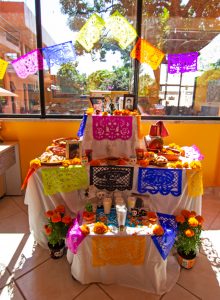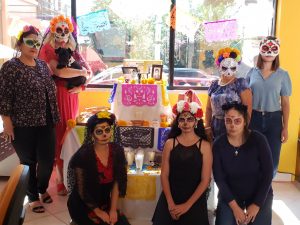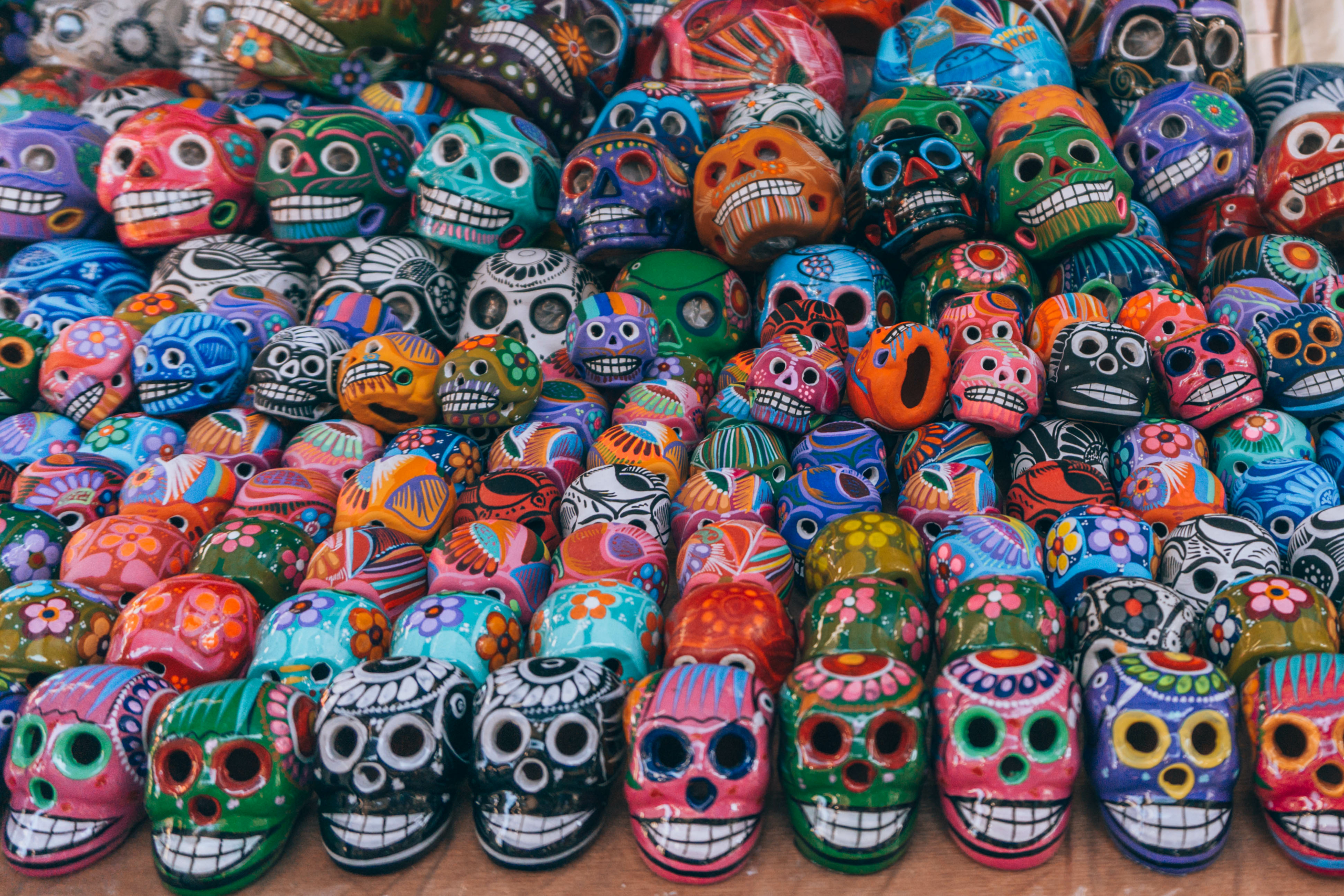Food plays an important part of the activities especially those that were a favourite of the deceased. There are some traditional foods associated with Day of the Dead, found in Mexico only between late September and early November, the most common being Pan de Muertos.
Pan de Muertos
Literally translated as Bread of the Dead, a rather macabre name for a delicious treat!
Pan de Muertos is a sweet bread that is oven baked like any other bread, usually in a bun shape and of various sizes. Sugar, orange zest and sometimes anise are added to the mixture, a citrus glaze is added after baking and sprinkled with white or coloured sugar. A little portion is cut from the dough and fashioned into the shape of bones, skulls or tears and these are laid on the top of the loaf prior to baking. Best appreciated when fresh, the bread is a mouth- watering treat that is traditionally accompanied by Mexican hot chocolate and enjoyed at the night-time graveside vigils when the temperatures are cooler.
Sugar Skulls
The sugar skull may be the most recognizable symbol of Dia de Muertos.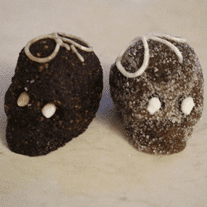
Human skulls were used to symbolize life and death by the Mayan and Aztec civilizations and the early versions were thought to be made of amaranth – an ancient grain. The Mexican tradition began in the 17th century as sugar was abundant and therefore an inexpensive means to produce the skulls and easy to decorate. Some versions are edible and small ones are often given as gifts for children. The inedible versions are placed on the altars or at the gravesite. The distinctive designs are nowadays seen on other items such as these ceramic skulls.
Hot Chocolate
Mexican chocolate is particularly favored in the fall and winter seasons with the onset of colder temperatures.
The Chocolate plant is native to Mexico. Historically, the beans were ground on a grinding stone and used to make a hot chocolate drink that was spicy, not the sweetened as is more common in present day.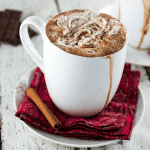
In the cup of hot chocolate seen here, whipped cream has been added for an extra touch!
Best made with traditional Mexican chocolate which is melted in a pan with water, and cinnamon, then milk is added with some sugar and chili powder (optional). It is traditional to create a foamy hot chocolate using a molinillo, seen in the picture -a Mexican wooden hand tool with grooves and moving rings. Held in the hands and rubbed between the palms, the molinillo creates a lovely foam.
 Perfect to curl up with on a cool evening, just pop a cinnamon stick in your Mexican hot chocolate and enjoy this spicy, soothing drink.
Perfect to curl up with on a cool evening, just pop a cinnamon stick in your Mexican hot chocolate and enjoy this spicy, soothing drink.
Tamales
One of the earliest known food and part of the ethnic culture of Mexico, the word tamale comes from the Aztec word tamalli which means “wrapped.”
The tamal (singular) consists of corn meal dough, originally filled with meat, the modern-day version can be savoury or sweet containing meats or cheese, vegetables or fruits. The dough is stuffed with a filling and wrapped in a corn husk or banana leaf, then steamed. The preparation involved in the making of tamales is labour intensive and time consuming and so they are rarely made in small amounts and usually reserved for holidays or special occasions.
They likely will be made ahead of time, typically dozens or even hundreds at a time, then packed ready to be steamed or cooked on a fire, or grill. The outer wrapping may be dispensed with or used as a plate. Tamales are a favorite food for the Day of the Dead season, as well as many other holidays.
Flowers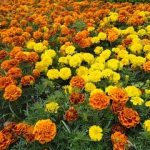
Cempazuchitl or Marigold is the flower most closely related to the Day of the Dead, their vivid colors and distinctive fragrance said to help guide the spirits to their gravesites where their loved ones await. Other flowers are often found at the altars or around the burial place of the deceased, some of which are cockscomb, gladiolus, chrysanthemums and baby’s breath. Each of them play an important part in the celebration, selected for their color, fragrance or significance.
Ofrendas
Meaning “offerings” in Spanish
Día de Muertos ofrendas are intended to encourage and sustain spirits on their long crossing from the other side. Objects placed at the altars and gravesites may include toys or candies for the babies and children, favourite food and drink or items valued or used in their work for the adults. Candles, photographs, or religious symbols are all meant to comfort the souls of their decease loved ones upon their long-awaited return.
